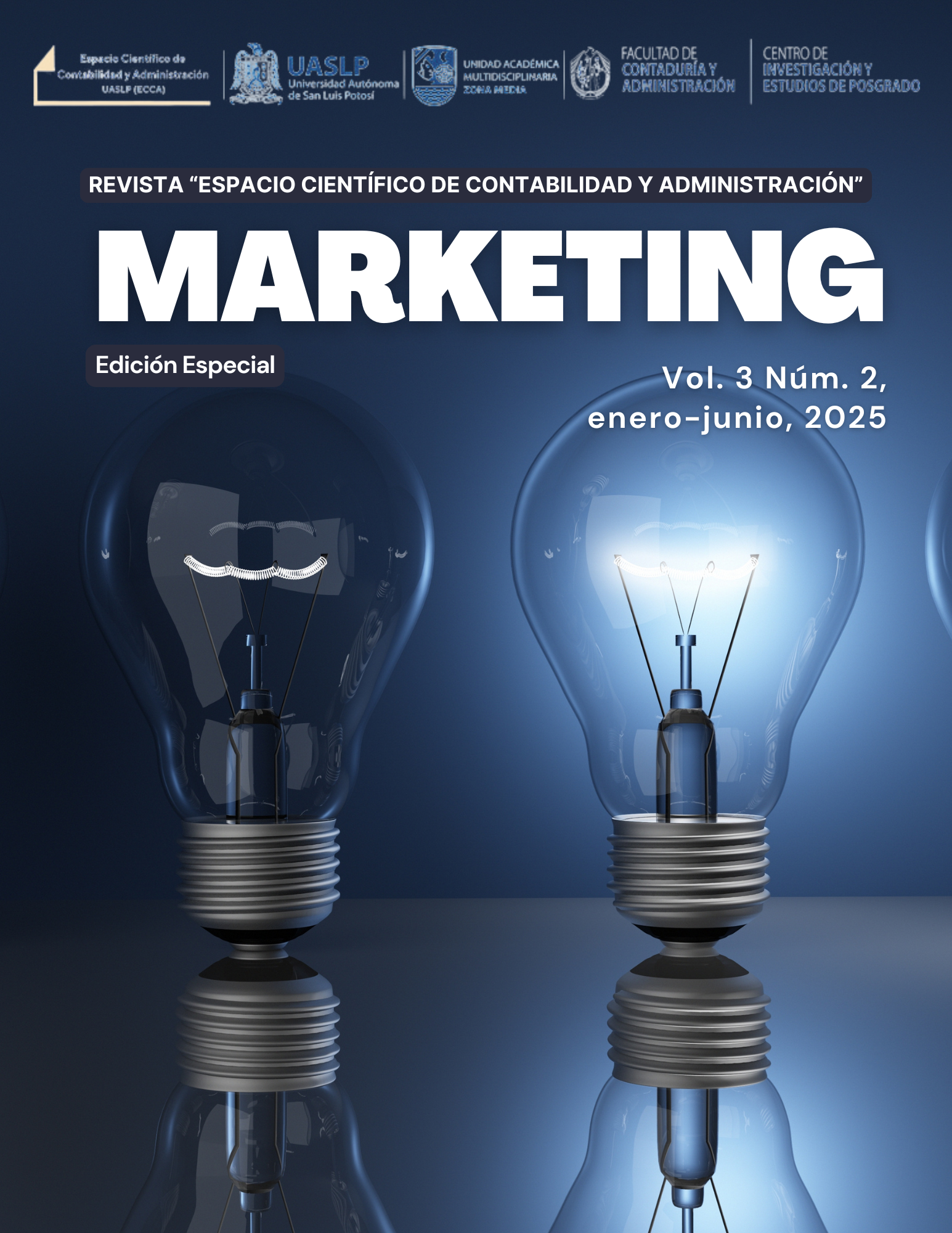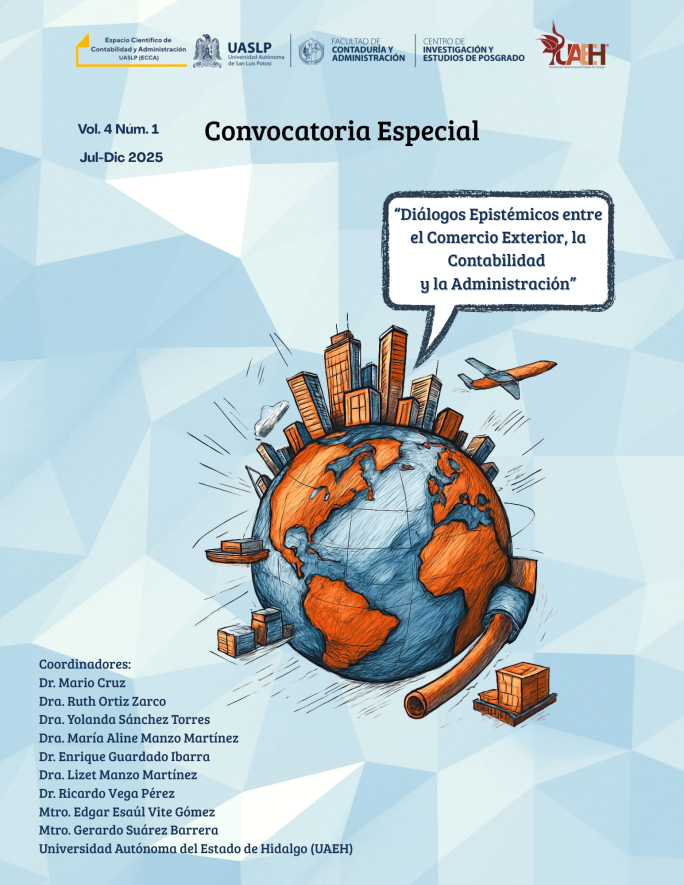The ANALYSIS OF THE POSITIONING OF STREAMING SERVICES PERCEIVED BY UAMZM-UASLP STUDENTS
DOI:
https://doi.org/10.58493/ecca.2025.3.2.04Keywords:
positioning, Perceptual map, Correspondence analysis, Streaming servicesAbstract
This study aims to analyze the positioning of music streaming services through a series of attributes perceived by students at UAMZM-UASLP. The study was conducted using a quantitative approach, with a descriptive scope and a cross-sectional design. Students enrolled at UAMZM-UASLP were considered the study population, conducting a stratified sampling, obtaining a total sample of 299 students. The companies considered in the study were: Amazon Music, Apple Music, Spotify, YouTube Music, and Deezer, in addition to evaluating them based on the attributes of: music catalog, audio quality, user interface, download functions, customization, customer service, offers and promotions, and ease of registration. After conducting the study, it was found that Spotify was the leading brand, while the brand that came closest to the ideal was Deezer.References
Alzate, M., Arce, M., & Cebollada, J. (2022). Mining the text of online consumer reviews to analyze brand image and brand positioning. Journal of Retailing and Consumer Services, 67, 1-29. doi:https://doi.org/10.1016/j.jretconser.2022.102989
AMAI (Asociación Mexicana de Agencias de Inteligencia de Mercado y Opinión. (2024). Estimaciones NSE 2022 y Regla AMAI 2024. Obtenido de https://www.amai.org/NSE/index.php?queVeo=NSE2024
Astuti, E., & Hastuti, S. (2022). Analysis of consumer perception and brand image to consumer loyalty by online-based travel app. International Journal of Multidisciplinary Research and Literature, 1(3), 241-360. doi:https://doi.org/10.53067/ijomral.v1i3
Azionya, C., & Overton, N. (2021). The development of a brand perception instrument for South African youth. Communitas, 26(3), 33-52. doi:https://doi.org/10.38140/com.v26i.4846
Chalaby, J. (2024). The streaming industry and the platform economy: an analysis. Media, Culture & Society, 46(3), 552-571. doi:https://doi.org/10.1177/01634437231210439
Cortés, J., Barceló, T., & Fuentes, G. (2024). La burbuja de las plataformas de contenido en streaming: pérdida de suscriptores, causas y perspectiva de futuro. Revista Comunicación, 22(1), 75-92. doi:https://doi.org/10.12795/Comunicacion.2024.v22.i01.05
Damayanti, K., & Suyanto, A. (2022). Positioning Analysis of Video-on-Demand Service Provider in Indonesia Based on E-Service Quality Dimensions. Asian Journal of Research in Business and Management, 4(2), 98-110. doi:https://doi.org/10.55057/ajrbm.2022.4.2.10
Dwivedi, S., Gupta, D., Agrawal, R., Mishra, A., Gaikwad, S., Kushwaha, V., . . . Hasan, A. (2024). Profiling of OTT viewers and their perception mapping using advanced technological models. International Journal of Religion, 5(1), 567-579. doi:https://doi.org/10.61707/vf9h1w64
Evens, T., Henderickx, A., & Conradie, P. (2023). Technological affordances of video streaming platforms: Why people prefer video streaming platforms over television. European Journal of Communication, 39(1), 1-27. doi:https://doi.org/10.1177/02673231231155731
Gigauri, I. (2019). Perceptual Mapping as a Merketing Research Tool for Brand Positioning. International Journal of Economics and Management Studies, 6(4), 73-79. doi:10.14445/23939125/IJEMS-V6I4P110
Haro, A., Chisag, E., Ruiz, J., & Caicedo, J. (2024). Tipos y clasificación de las investigaciones. Revista Latinoamericana de Ciencias Sociales y Humanidades, 5(2), 966-977. Obtenido de https://dialnet.unirioja.es/descarga/articulo/9541046.pdf
Lima, O., & Santos, C. (2022). Linking brand and competitive advantage: The mediating effect of positioning and market orientation. European Research on Management and Business Economics, 28(2). doi:https://doi.org/10.1016/j.iedeen.2021.100194
Na, W., & Dong, H. (2021). Factors for intention to use for digital contents subcriptions service in Korea. Journal of Digital Contents Society, 22(5), 755-766. doi:https://doi.org/10.9728/dcs.2021.22.5.755
Papathanasopoulos, A., & Varoutas, D. (2024). On the competition between Video OTT platforms vs Traditional TV: A niche case study in Greece. Telematics and Informatics Reports, 16, 1-11. doi:https://doi.org/10.1016/j.teler.2024.100166
Rahe, V., Buschow, C., & Schultz, D. (2021). How users approach novel media products: Brand perception of Netflix and Amazon Prime Video as signposts within the German subscription-based video-on demand market. Journal of Media Business Studies, 18(1), 45-58. doi:https://doi.org/10.1080/16522354.2020.1780067
Rambasae, C. (2024). 23 Years of Research on Market Positioning: A Future Research Agenda. Ekonomi dan Bisnis, 11(1), 12-24. doi:https://doi.org/10.35590/jeb.v11i1.7575
Ramos, N., & Neri, A. (2022). Las 4ces del marketing y su relación con el posicionamiento de marca. TELOS: Revista de Estudios Interdisciplinarios en Ciencias Sociales, 24(2), 384-396. doi:http://www.doi.org/10.36390/telos242.11
Rua, O., & Santos, C. (2022). Linking brand and competitive advantage: The mediating effect of positioning and market orientation. European Research on Management and Business Economics, 28, 1-10. doi:https://doi.org/10.1016/j.iedeen.2021.100194
Sanapala, G., Nzeku, S., & Mohan, K. (2023). A study on how brand positioning helps the business to stand-out distincively in saturated market: a study with reference to select supermarkets. International Journal of Professional Business Review, 8(11), 1-11. Obtenido de https://dialnet.unirioja.es/descarga/articulo/9199182.pdf
Saqib, N. (2021). Positioning - a literature review. PSU Research Review, 5(2), 141-169. doi:10.1108/PRR-06-2019-0016
Seifert, R., Denk, J., Clement, M., Kandziora, M., & Meyn, J. (2024). Conversion in music streaming services. Journal of Interactive Marketing, 59(2), 201-219. doi:https://doi.org/10.1177/10949968231186950
Torres, C., & Anaya, J. (2023). El fenómeno Spotify en la industria de la música online de México y Estados Unidos. En A. Mercado, & S. Battezzati, Industrias culturales norteamericanas en la era digital (Primera ed., págs. 77-97). Universidad Nacional Autónoma de México.
Unidad Académica Multidisciplinaria Zona Media (UAMZM). (2024). Historia de la UAMZM. Obtenido de https://zonamedia.uaslp.mx/Paginas/Contenido-General/3999#gsc.tab=0
Wu, T., Jiang, N., & Chen, M. (2025). The role of cognitive factors in consumers' perceived value and subscription intention of video streaming platforms. Acta Psychologica, 54. doi:https://doi.org/10.1016/j.actpsy.2025.104758
Yilmaz, M., & Altunay, H. (2023). Marketing insight from consumer reviews: Creating brand positio through opinion mining approach. Telematics and Informatics Reports, 11, 1-11. doi:https://doi.org/10.1016/j.teler.2023.100094
Zhang, L., Zhan, G., Li, Q., & Ren, J. (2022). Does platform type matter? A semantic analysis of user attitude formation on online platforms? Frontiers in Psychology, 13, 1-8. doi:https://doi.org/10.3389/fpsyg.2022.1005429

Downloads
Published
Issue
Section
License
Copyright (c) 2025 Ángel David González Verde, Sanjuana Edith Grimaldo Reyes, Rosa Isela Urbiola Rodríguez

This work is licensed under a Creative Commons Attribution-NonCommercial-ShareAlike 4.0 International License.
Usted es libre de:
- Compartir — copiar y redistribuir el material en cualquier medio o formato
- Adaptar — remezclar, transformar y construir a partir del material
- La licenciante no puede revocar estas libertades en tanto usted siga los términos de la licencia
Bajo los siguientes términos:
- Atribución — Usted debe dar crédito de manera adecuada , brindar un enlace a la licencia, e indicar si se han realizado cambios . Puede hacerlo en cualquier forma razonable, pero no de forma tal que sugiera que usted o su uso tienen el apoyo de la licenciante.
- NoComercial — Usted no puede hacer uso del material con propósitos comerciales .
- CompartirIgual — Si remezcla, transforma o crea a partir del material, debe distribuir su contribución bajo la la misma licencia del original.
- No hay restricciones adicionales — No puede aplicar términos legales ni medidas tecnológicas que restrinjan legalmente a otras a hacer cualquier uso permitido por la licencia.












